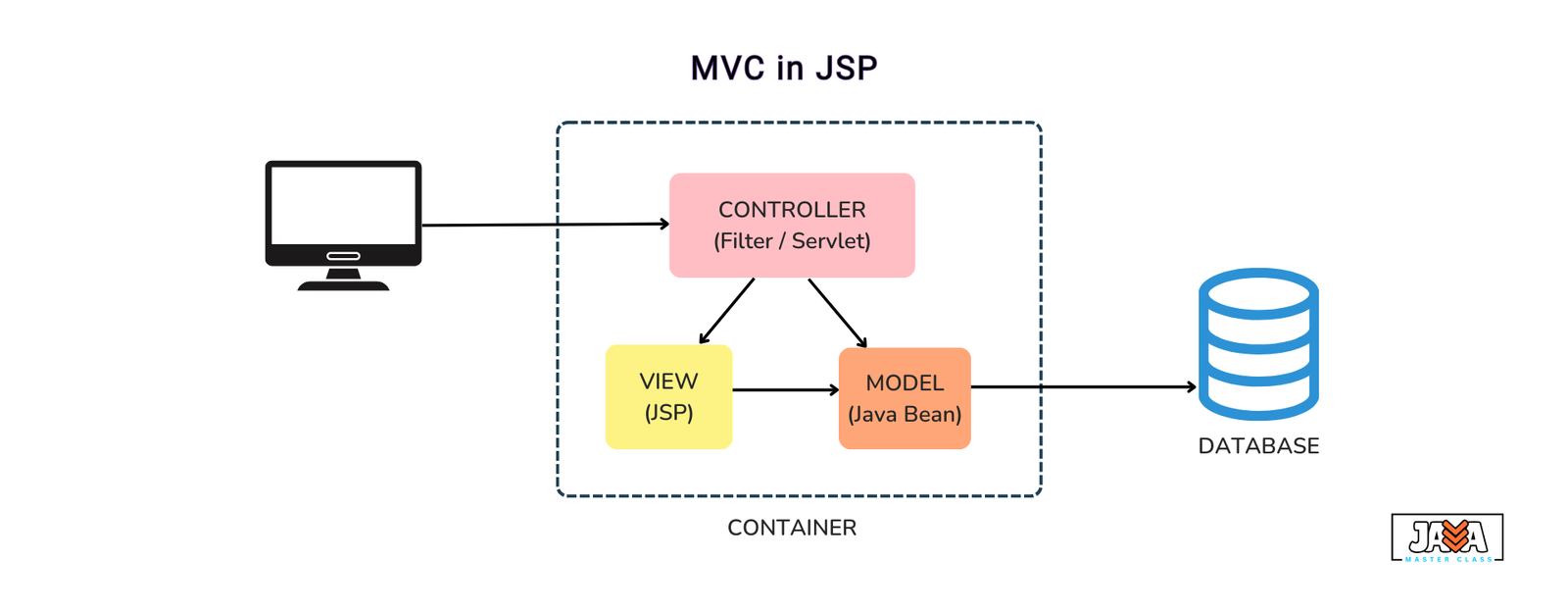Model-View-Controller (MVC) is a popular design pattern used to separate concerns in web applications. It divides an application into three interconnected components: the Model, the View, and the Controller. This structure helps make your application easier to maintain, scale, and test.

When working with Servlets and JSP (JavaServer Pages), the MVC pattern can be implemented as follows:
- Model:
- The Model represents the data of the application and the business logic. In the MVC with Servlets and JSP context, this would often be JavaBeans or POJOs (Plain Old Java Objects) that contain data and methods to access or manipulate it.
- For example, a
Userclass might be the model that stores user details and performs validation or database operations.
- View:
- The View is responsible for rendering the UI. In the case of Servlets and JSP, the View is typically a JSP file that dynamically generates HTML content.
- JSP files contain HTML mixed with Java code (through tags like expressions, scriptlets, etc.) to display the data provided by the Model.
- Example: A
userProfile.jsppage that displays user data fetched by the servlet.
- Controller:
- The Controller is the Servlet that handles client requests, processes them, and updates the model or view accordingly.
- When a user sends a request (e.g., clicking a “Submit” button), the Servlet processes this request (using HTTP methods like GET or POST), interacts with the model (fetches data or updates it), and forwards the response to the appropriate JSP (the View).
Flow of MVC
- The user sends a request, such as a URL hit like
/login. - The Controller (a Servlet) receives the request, processes it (e.g., checks user credentials against a database or validates input), and interacts with the Model (e.g., fetching user data or updating the database).
- The Controller then forwards the request to a View (a JSP page), passing the Model data (e.g., user details) to be displayed.
- The JSP View renders the data dynamically and generates HTML, which is sent back to the user’s browser.
Advantages of MVC
- Separation of Concerns: With MVC, each part of the application (data, logic, and presentation) is separated into different components, making it easier to manage.
- Scalability and Maintenance: It allows for easier updates and changes. We can modify the view (JSP) without affecting the business logic (Servlets), and vice versa.
- Reusability: The Model can be reused across different Views (JSPs).
